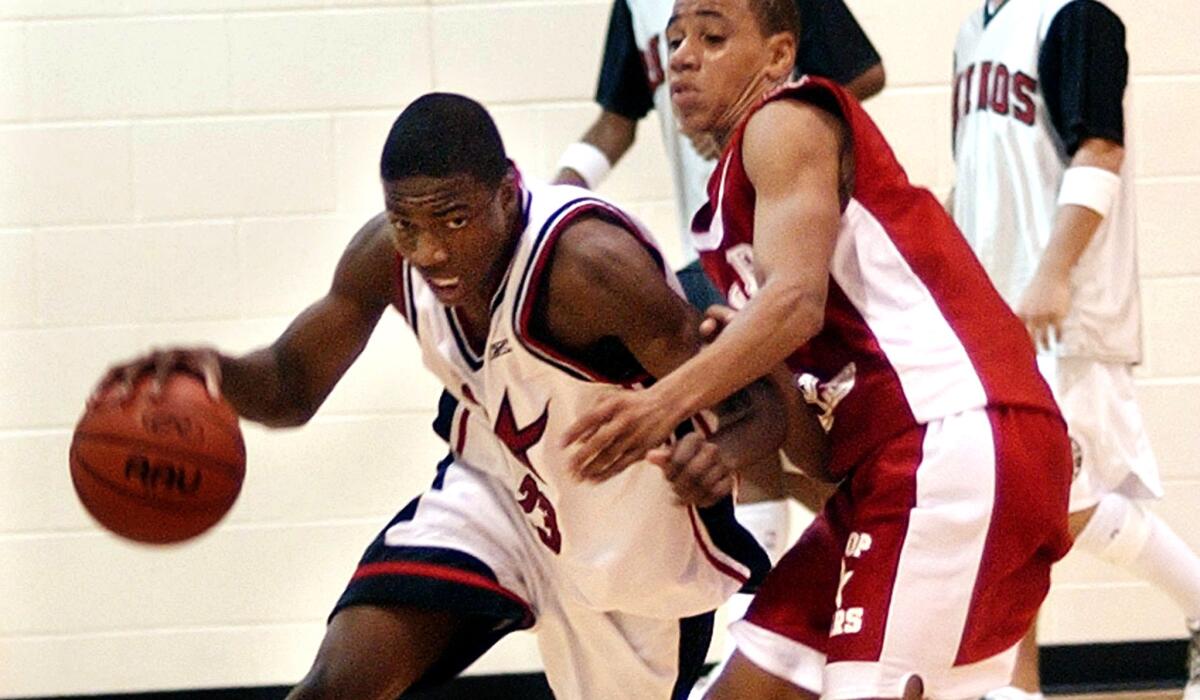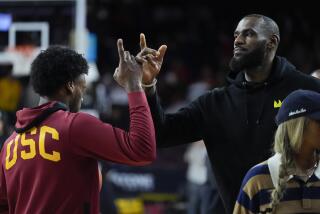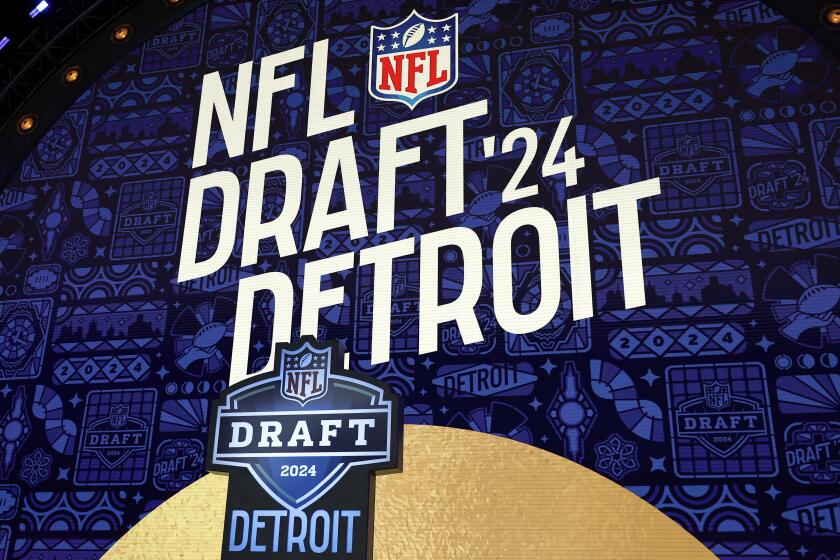For a few recruits, committing to a college happens before puberty

The player has most of the traits that make college basketball coaches salivate: a jump shot, a good handle, passing ability and instincts. His father has great size, so his frame should fill out.
By 2023, when LeBron James Jr., 10, will graduate from high school, he might be a desirable basketball player.
Patience being scarce in college basketball recruiting, some coaches apparently don’t want to wait that long. And their interest has his father, Cleveland Cavaliers star LeBron James, asking: How young is too young?
“Yeah, he’s already got some offers from colleges,” James told WWJ-TV in Detroit this week. “It’s pretty crazy. It should be a violation. You shouldn’t be recruiting 10-year-old kids.”
James Jr. is making headlines because he is especially young — and has a famous father — but most years a handful of middle school-age athletes receive offers from college coaches. There are no reliable statistics because the offers aren’t official, but football players in the eighth grade and below have received college offers. Recently, USC and UCLA offered scholarships to baseball players who hadn’t hit high school.
Evan Daniels, director of basketball recruiting for Scout.com, said the practice is “extremely rare” among basketball players.
“To me, I think it’s absurd,” Daniels said, adding that most scouting services don’t evaluate players until they reach high school.
“How can you project a seventh-grader to be good enough for a high-major basketball program?” he said “It’s hard enough when they’re freshmen.”
In 2003, Demetrius Walker of Fontana was hyped as the next great basketball player when he was 12. The potential was never fulfilled. Walker ultimately signed with New Mexico, then transferred to Grand Canyon, where he was kicked off the team.
Given a ravenous appetite for recruiting news, though, showcases for young players can be alluring. Rivals.com recently added two sixth-graders to its football database.
“You may recognize Daron Bryden,” Rivals.com said of a 5-foot-2 quarterback “as he starred on ‘Kids Do the Darndest Things’ hosted by L.L. Cool J.”
In the case of James Jr., his father wasn’t clear on the actual offers, and the details in such instances are often murky. Because coaches aren’t allowed to offer binding agreements to players so young, any offer is a handshake deal.
The NCAA doesn’t police recruitment of players below seventh grade. So recruitment of younger players remains a frontier some coaches are willing to explore. Last year, Kentucky Coach John Calipari watched James Jr. play a game in Lexington, Ky. Ohio State Coach Thad Matta said James Jr. is “on my radar.”
There are incentives on both sides. The coaches can generate buzz for their programs. The players get the prestige of being attached to a college team.
But when the lag time between offer and enrollment is more than a presidential term, interest on both sides can wane. Former Arizona basketball coach Lute Olson reportedly offered a scholarship to Matt Carlino, now a senior at Marquette, when Carlino was in the third or fourth grade. Olson, 80, retired in 2008. Carlino graduated from high school in 2011.
Other times, needs for both parties change. Five years ago, USC football coach Lane Kiffin offered 13-year-old David Sills a scholarship for the 2015 class. This year, when David Sills was finally old enough to sign, Rivals.com rated USC’s recruiting class as the best in the nation.
Sills wasn’t part of it. He decided to go to West Virginia.
In 2007, basketball player Ryan
Boatright committed to USC as a 13-year-old. He ultimately signed with Connecticut and helped the Huskies win a national championship last season.
Boatright received his offer from the Trojans while he was attending a USC basketball camp. With his college choice dealt with, Boatright then flew home to Illinois, where he faced another decision:
Where should he attend high school?
Twitter: @zhelfand
More to Read
Get our high school sports newsletter
Prep Rally is devoted to the SoCal high school sports experience, bringing you scores, stories and a behind-the-scenes look at what makes prep sports so popular.
You may occasionally receive promotional content from the Los Angeles Times.







